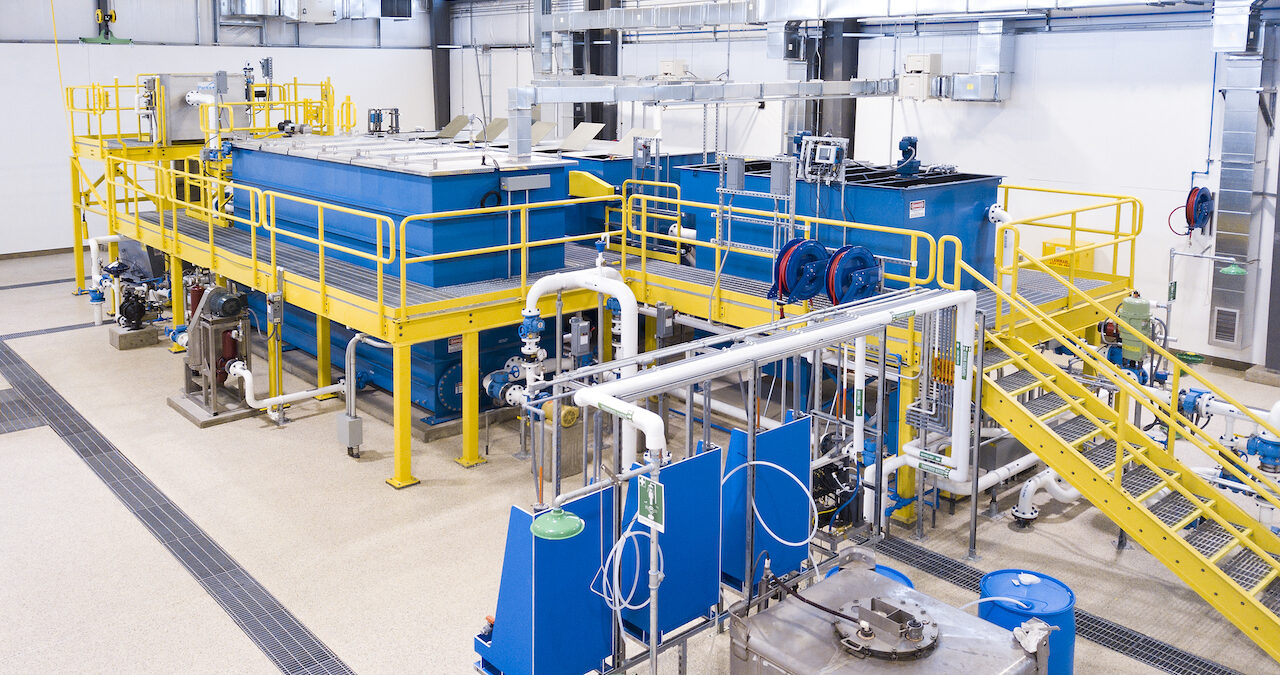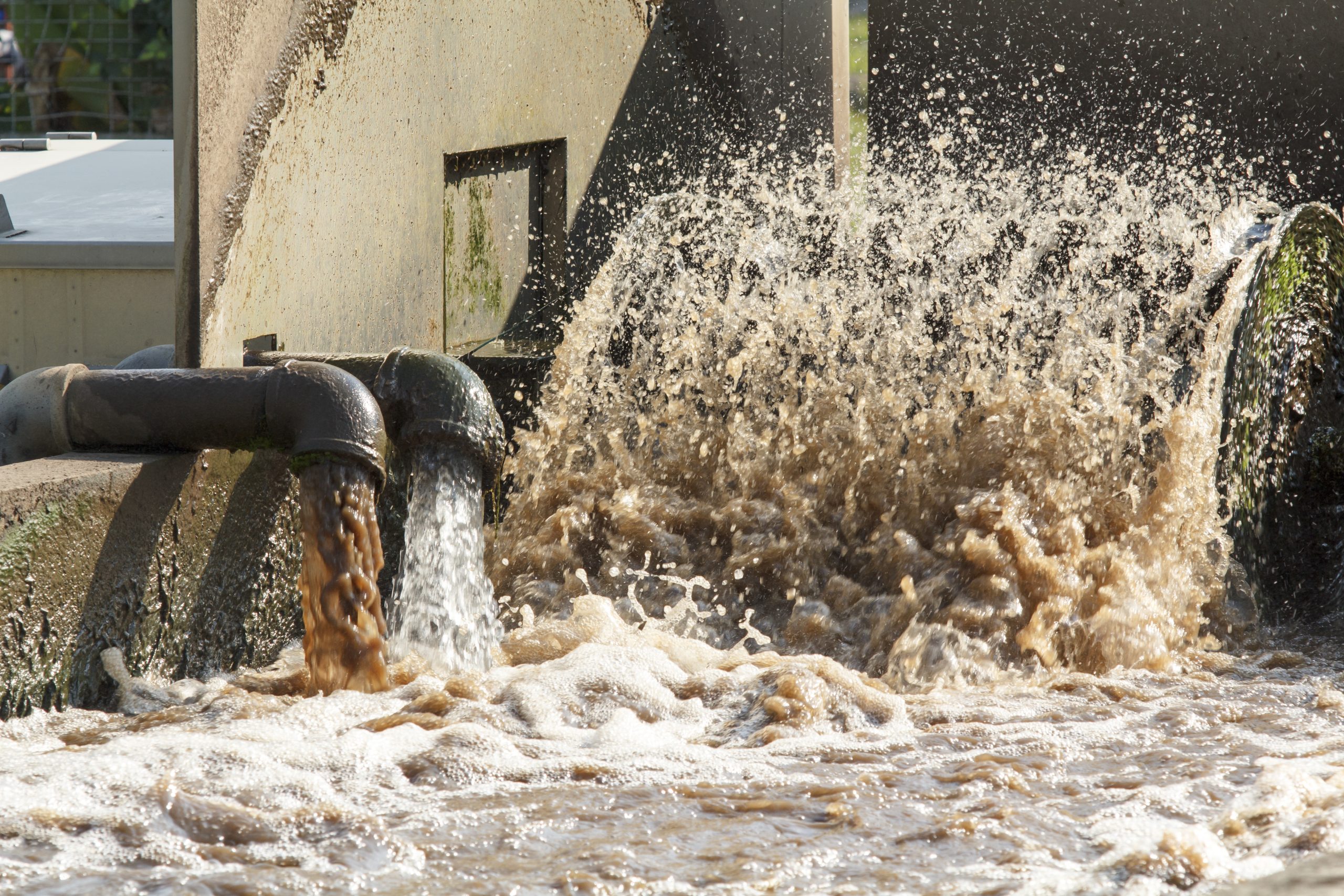Industrial Waste Water Treatment-- Efficient Waste Administration for Factories
Wiki Article
Developments and Advances in Industrial Waste Water Treatment Technologies
The landscape of commercial wastewater treatment is undertaking a transformative shift, driven by technologies that improve both efficiency and sustainability. Arising technologies, such as membrane layer bioreactors and microbial fuel cells, are redefining impurity removal procedures while contributing to power generation. Furthermore, source recovery techniques are gaining grip, aligning with round economy concepts. As regulatory requirements advance, the integration of AI and artificial intelligence into wastewater monitoring systems promises to make sure and simplify operations compliance. The complete implications of these developments increase essential questions regarding their scalability and lasting effect on sector techniques.Summary of Waste Water Therapy Technologies
Wastewater treatment technologies include a variety of techniques developed to get rid of contaminants from commercial effluents prior to their launch into the setting. These innovations are critical for keeping environmental equilibrium and ensuring compliance with ecological guidelines. The main categories of wastewater therapy consist of physical, chemical, and organic techniques, each serving distinctive functions based on the nature of the contaminants existing.

Biological therapy approaches employ bacteria to break down organic matter, making them especially reliable for organic-rich effluents. Techniques like triggered sludge and biofilm activators harness the all-natural destruction capabilities of germs, bring about significant reductions in biochemical oxygen demand (BODY)
Advanced Purification Strategies
Advanced purification techniques represent an important evolution in the realm of industrial wastewater treatment, enhancing the effectiveness of impurity elimination procedures. Industrial Waste Water Treatment. These techniques include a series of innovations, consisting of microfiltration, ultrafiltration, nanofiltration, and reverse osmosis, which supply sequential barriers for different bit sizes and chemical structuresMicrofiltration and ultrafiltration utilize membrane systems to remove suspended solids, microorganisms, and larger natural particles, boosting the top quality of effluent previous to more therapy. Nanofiltration links the void in between ultrafiltration and turn around osmosis, successfully eliminating organic compounds and divalent ions, hence lowering the lots on downstream procedures.
Reverse osmosis uses the highest degree of purification by allowing only water and small particles to pass via its semi-permeable membrane layers, making it ideal for reclaiming premium water from industrial effluents. Current improvements in membrane technology, including the development of more fouling-resistant and durable materials, have considerably boosted functional efficiency and lowered costs.
Incorporating these innovative purification methods not only boosts the general therapy process yet likewise adds to sustainability initiatives by allowing water reuse and source recovery in commercial settings. (Industrial Waste Water Treatment)
Organic Treatment Technologies

In addition, the advancement of engineered organic systems, such as membrane bioreactors (MBRs), combines organic treatment with innovative membrane filtration. This assimilation enables greater effluent high quality and decreased impact, making it appropriate for space-constrained commercial facilities. Innovations in genetically crafted microorganisms have actually likewise arised, improving the biodegradation of details pollutants, such as pharmaceuticals and hefty steels, that are generally challenging to get rid of.
Additionally, the execution of bioaugmentation techniques, where advantageous germs are introduced to boost the existing biological therapy processes, has actually shown appealing cause enhancing therapy performance. These advancements jointly represent a trend towards even more efficient and sustainable organic treatment methods that can adapt to the advancing complexities of commercial wastewater streams. As industries remain to prioritize ecological compliance, these biological technologies will play a crucial duty in wastewater administration.

Resource Healing Methods
In industrial setups, the assimilation of source recuperation techniques has come to be significantly crucial for enhancing sustainability and reducing waste. These methods concentrate on drawing out important products and power from wastewater streams, consequently transforming potential toxins right into recyclable sources.One famous technique is nutrition recovery, where nitrogen and phosphorus, often existing in excess in wastewater, are caught and converted right into fertilizers. This not just minimizes environmental influences but additionally supplies a circular economic situation service for farming applications. Furthermore, technologies such as anaerobic digestion allow for the conversion of natural waste into biogas, an eco-friendly energy resource that can offset fossil gas use in industrial procedures.
Furthermore, progressed purification and membrane layer modern technologies facilitate the recuperation of commercial by-products such as steels and salts. These recovered products can be rehabilitated right into manufacturing processes, reducing the need for virgin sources.
Future Fads in Drainage Monitoring
As industries progressively prioritize sustainability, the future of wastewater administration is established to undertake significant changes. Technological improvements, such as artificial intelligence and device knowing, will allow a lot more reliable surveillance and monitoring of wastewater systems. These modern technologies can forecast upkeep demands, maximize therapy procedures, and improve decision-making, eventually decreasing operational costs and environmental impact.Furthermore, the combination of round economic situation concepts will certainly play a critical duty in wastewater monitoring. Industries are anticipated to move towards systems that not only deal with wastewater yet likewise recuperate important resources, such as nutrients, water, and power. This shift will minimize waste and advertise the reuse of products, straightening with global browse around this web-site sustainability objectives.
Arising treatment techniques, such as membrane layer bioreactors and advanced oxidation processes, will certainly additionally enhance the effectiveness of wastewater therapy, enabling better effluents appropriate for reuse. Additionally, governing frameworks are likely to advance, highlighting stricter criteria for wastewater discharge and encouraging sectors to embrace innovative therapy services.
Verdict
Finally, the evolution of commercial wastewater treatment modern technologies demonstrates a substantial shift in the direction of improved efficiency and sustainability. Technologies in sophisticated purification methods, organic treatments, and source recovery approaches highlight the industry's dedication to environmental stewardship. The combination of expert system and machine understanding even more maximizes these processes, making certain regulatory conformity and advertising a circular economic situation. Continued improvements in these locations will play a critical role in shaping the future of wastewater monitoring and protecting crucial water sources.The landscape of commercial wastewater therapy is undergoing a transformative shift, driven by developments that improve both effectiveness and sustainability.Wastewater therapy visit the site technologies encompass a variety of techniques made to get rid of impurities from commercial effluents prior to their launch right into the setting.Harnessing the power of biological procedures has actually led to substantial innovations in the treatment of industrial wastewater.Additionally, the implementation of bioaugmentation techniques, where advantageous microorganisms are introduced to enhance the existing biological therapy procedures, has actually revealed encouraging outcomes in click for more boosting therapy efficiency. These advancements jointly indicate a pattern towards more sustainable and effective organic therapy techniques that can adjust to the progressing intricacies of industrial wastewater streams.
Report this wiki page